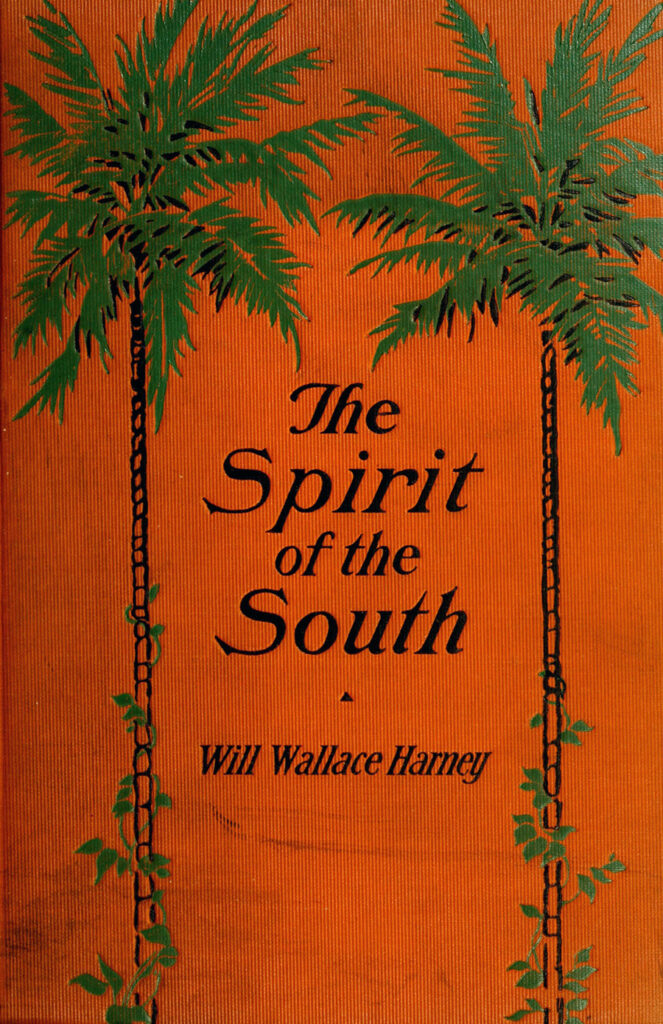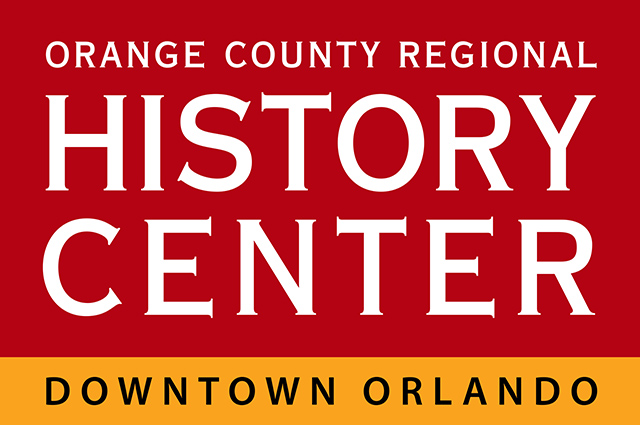By William S. Morgan V. from the Spring 2025 Edition of Reflections from Central Florida
In the tumultuous years following the Civil War, a man arrived on the Central Florida frontier with a vision of how its untamed wilderness might be transformed. Where others saw only dense forests, swamps, and scattered settlements, Will Wallace Harney – a writer, entrepreneur, and visionary – saw a land of opportunity.
Harney’s personal efforts to promote Central Florida helped lead to its transformation into a prime destination for agriculture, business, and tourism. In fact, his efforts earned him the reputation of being a one-man chamber of commerce.

Fresh start in Florida
Harney’s story began in Bloomington, Indiana, where he was born to a college mathematics professor and his wife in 1831. His father subsequently gave up academia and moved the family to Louisville, Kentucky, where he became publisher of a popular daily newspaper. So, from an early age, Harney enjoyed an environment that encouraged discussion and the development of thoughts and ideas. Perhaps more importantly, he had a ready outlet for sharing those thoughts and ideas with a broad audience. By the age of 27, his writings – particularly his poetry – were syndicated nationally, gaining him a large and loyal readership.
Like so many others, Harney sought a fresh start after the Civil War. As newlyweds in 1869, he and his bride, Mary Randolph Harney, entered a homestead claim for 160 acres on the Conway chain of lakes just south of Orlando. It remains a picturesque spot, but in those days its natural beauty was even more striking, with clear waters, lush vegetation, and a mild climate. To Harney, this was not just a wilderness. It was a landscape brimming with potential, ripe for transformation.
Harney’s vision was clear from the start: Central Florida was a place where settlers could enjoy both economic prosperity and personal fulfilment far from the crowded and industrialized cities of the North. Unlike many who viewed the region’s subtropical climate as challenging or even hostile, he embraced it. He recognized that the fertile soil, extended growing seasons, and natural resources could make his new home a hub for agriculture and trade. All it needed was a champion, someone who could broadcast its possibilities to the outside world. Harney took on that role with gusto.
Focus on citrus and local infrastructure
Harney began his one-man marketing campaign by focusing on agriculture, particularly citrus. At the time, the idea of growing oranges on a large scale was still relatively new. Harney was ahead of that curve. He planted one of the area’s earliest commercial groves, experimenting with different varieties to find the best fit for local conditions.
But Harney did more than plant orange trees. He became an ambassador for the nascent citrus industry. His syndicated writings shifted from poetry and puff pieces to serious and engaging articles about citrus cultivation. He shared his personal insights and experiences in national newspapers and popular magazines such as the New York Times and Harper’s Weekly. His vivid descriptions of lush groves, bountiful harvests, and the sweet fragrance of orange blossoms painted a picture of paradise that captivated the imagination of readers seeking their own new starts.
Harney’s articles were practical, too. He detailed how to grow oranges with tips on planting, irrigation, and pest control. By demystifying the process, he made it easier for newcomers to consider citrus farming a viable option. This helped lay the foundation for what would become one of Florida’s most important industries. Even after a century and a half of growth and economic diversification, the state remains synonymous with oranges. And much of that success can be traced back to pioneers like Harney who believed in the potential of citrus.
Harney also understood that Central Florida needed more than successful farmers. The region needed infrastructure. Roads, railways, and ports were essential for transporting goods and attracting settlers. Not surprisingly, he became a vocal advocate for improved transportation networks. He began peppering his writings with calls to build connections that would link the region to major markets in the North.
He heralded the arrival of the South Florida Railroad in the early 1880s as a turning point. The rail line connected Central Florida’s new interior groves to the steamboat landings on Lake Monroe, making it easier for farmers to transport their goods – particularly perishable citrus fruits – to markets across the country. This connection opened new opportunities for trade and commerce, transforming Orlando from a sleepy county seat into an accessible and attractive hub of activity.

Crafting a compelling narrative
What set Harney apart from other early promoters was his ability to effectively communicate his vision through storytelling. Beyond how-to articles about agriculture and opinion pieces seeking infrastructure improvements, he also succeeded in capturing the nation’s interest in Central Florida by depicting the lives of the area’s colorful and inspiring residents. These stories crafted an even more compelling narrative about the region’s potential, dispelling myths and misconceptions while highlighting its many advantages. For instance, he often emphasized how mild winters made it possible to grow crops year-round—an attractive and novel prospect for readers shivering in colder climates.
Some of Harney’s most memorable character sketches from the Central Florida frontier featured William Glover, a freedman from South Carolina who established one of the most successful farms in the county near the modern site of Boone High School in Orlando. Another neighbor, Jack Barber, eluded a string of trumped-up charges by simply vanishing into the wilderness on an extended hunting expedition. And a trio of “penniless” immigrants – William Jones, Marshall Porter, and Jesse Bumby – reaped rich rewards as they formed the nucleus of an “English colony.”
Harney’s promotional efforts were not limited to print. He was a master networker whose social circle included literary luminaries such as Mark Twain, Henry Wadsworth Longfellow, and John Greenleaf Whittier. Through these connections, he extended invitations to prominent journalists, politicians, and business leaders to personally tour Central Florida. Perhaps most notable was the “Western Party” that sojourned at his Pine Castle homestead on its way to the Everglades in April 1874. Members included wealthy banker Ingram Fletcher and correspondents from the New York Times and the Indianapolis Herald. By showing them firsthand what Orange County had to offer, Harney turned them into advocates who helped build a positive image of the region. In fact, Fletcher eventually made Orlando his permanent home, encouraging others to take the leap.
While Harney was focused on economic growth, he also had a deep appreciation for Central Florida’s natural beauty. He understood part of the region’s appeal was its environment, the lakes, forests, and wetlands that made it unique. All were depicted regularly in his writings, especially in his poetry. Some of his best-remembered poems include “Florida Dawn,” “Milking Time,” “Nooning in Florida,” “Old Canoe,” and “Over the Sugar Kettles.”

A long legacy
Harney died in 1912 at age 80, having lived to see Central Florida make great strides from its pioneer roots. He now rests beside his beloved wife Mary at Greenwood Cemetery near downtown Orlando. Though their home, named the Pine Castle, was destroyed by fire many years ago, its importance – not to mention its evocative name and whimsical style – has been memorialized in the name of a thriving community and by a series of historical markers and countless other tributes over the years.
Today, Central Florida is known for its bustling cities, theme parks, multiculturalism, and tech savvy. But behind the modern skyline and suburban sprawl lies the legacy of Will Wallace Harney – the man who saw potential where others saw only wilderness, and who dedicated his life to turning that potential into reality. As a one-man chamber of commerce, he didn’t just promote the region; he helped build it – one article, one grove, and one connection at a time. His story is a testament to the power of vision and the impact one person can have on the development of an entire region.
Note: For further reading, see William S. Morgan V, ed., A Pine Castle Anthology: The Collected Writings of Will Wallace Harney (Orlando, 2010).

